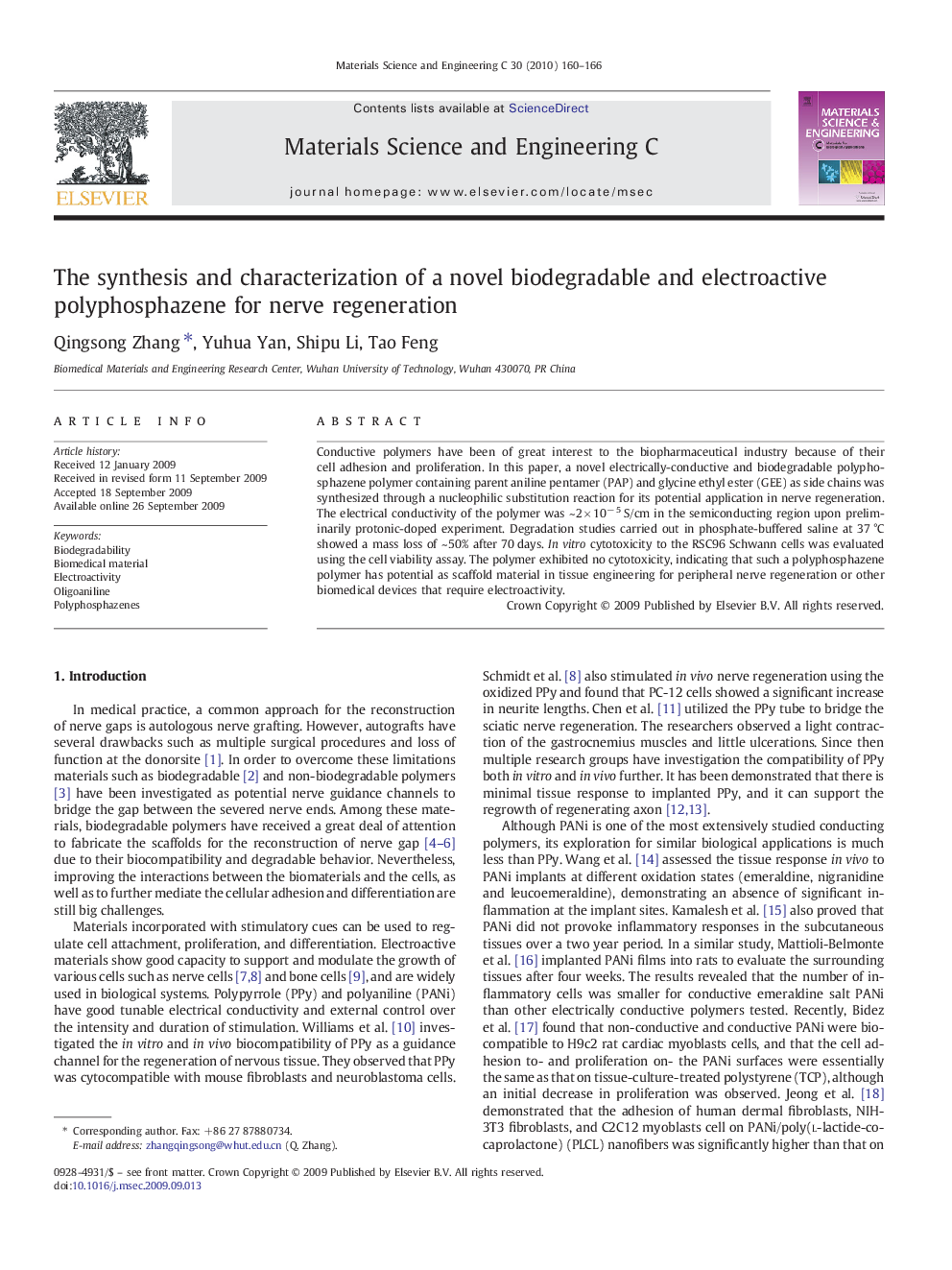| کد مقاله | کد نشریه | سال انتشار | مقاله انگلیسی | نسخه تمام متن |
|---|---|---|---|---|
| 1430106 | 987195 | 2010 | 7 صفحه PDF | دانلود رایگان |

Conductive polymers have been of great interest to the biopharmaceutical industry because of their cell adhesion and proliferation. In this paper, a novel electrically-conductive and biodegradable polyphosphazene polymer containing parent aniline pentamer (PAP) and glycine ethyl ester (GEE) as side chains was synthesized through a nucleophilic substitution reaction for its potential application in nerve regeneration. The electrical conductivity of the polymer was ~ 2 × 10− 5 S/cm in the semiconducting region upon preliminarily protonic-doped experiment. Degradation studies carried out in phosphate-buffered saline at 37 °C showed a mass loss of ~ 50% after 70 days. In vitro cytotoxicity to the RSC96 Schwann cells was evaluated using the cell viability assay. The polymer exhibited no cytotoxicity, indicating that such a polyphosphazene polymer has potential as scaffold material in tissue engineering for peripheral nerve regeneration or other biomedical devices that require electroactivity.
Journal: Materials Science and Engineering: C - Volume 30, Issue 1, 1 January 2010, Pages 160–166